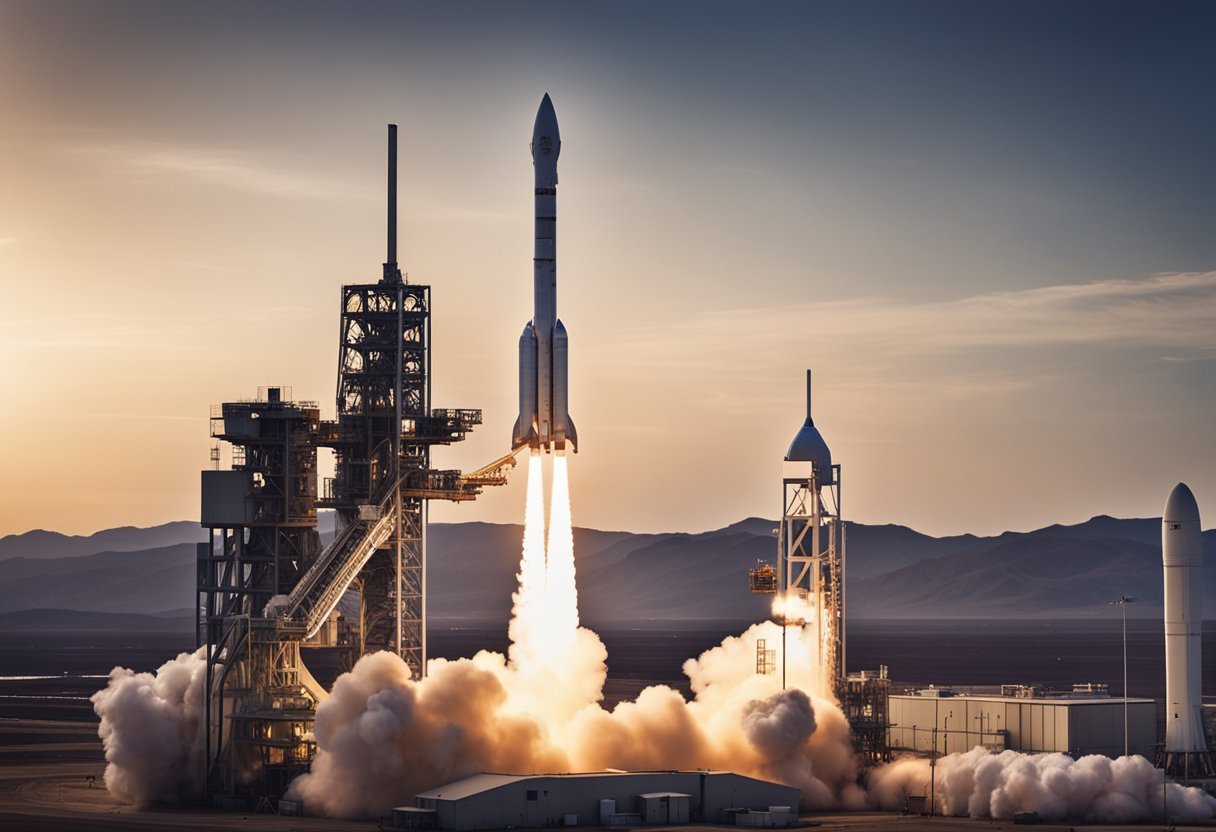
Private Spaceflight Regulations – Private spaceflight has opened a new frontier in aerospace innovation and tourism, breaking the paradigm that space exploration is the sole province of government agencies. As commercial entities orchestrate trips beyond Earth’s atmosphere, the necessity for robust and clear regulations becomes paramount to ensure safety, viability, and sustainability. In the wake of growing interest, governments around the world, spearheaded by the United States’ Federal Aviation Administration and the National Space Council, have begun to lay the groundwork for policies that will define the parameters within which private space stations and spacecraft must operate.
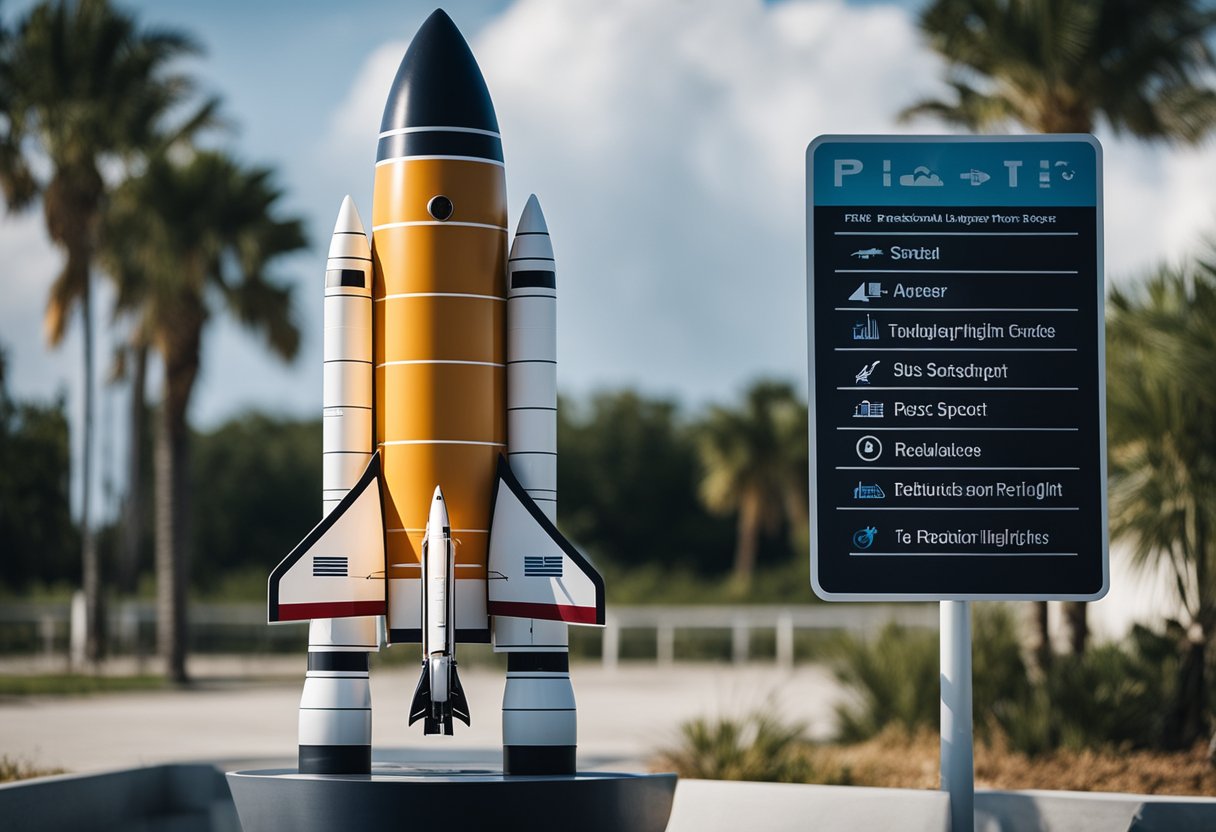
The progression towards a regulated private space sector is not only a matter of safety but also serves to protect investments and foster fair market competition. The development of regulations encompasses safety protocols for human spaceflight, the licensing of space activities, and the economic aspects of the space sector. Equally imperative is the establishment of space traffic management systems to avoid collisions and orbital debris, thereby preserving the common space around our planet for future generations. Our dialogue on these matters seeks to balance innovation and technological advancement against the necessity for oversight and preservation of space as a shared resource.

As we examine the chronicles of private spaceflight, let’s acknowledge the key players and policy changes that have carved paths for commercial opportunities beyond Earth’s atmosphere.
The commercial space sector has experienced dramatic changes since its inception. Initially, space was a domain exclusive to governmental agencies, such as NASA and the Soviet Space Program. However, with the turn of the century and significant technological advancements, private companies emerged to challenge the status quo. Innovators like Richard Branson, Jeff Bezos, and Elon Musk spearheaded the charge into this new frontier, representing entities such as Virgin Galactic, Blue Origin, and SpaceX, respectively. Their vision transformed the concept of space travel from a governmental endeavour to a realm brimming with commercial potential and innovation.
Congress has played a crucial role in shaping the landscape of private spaceflight. The pivotal Commercial Space Launch Act of 1984 established a foundation, promoting a regulatory environment that allowed private enterprises to flourish in the space industry. This piece of legislation was instrumental in clarifying the legal framework within which private companies could operate, thus encouraging private investment and innovation. Further amendments to the act fostered a conducive environment for growth, leading to a surge in commercial space activities including satellite launches, supply missions to the International Space Station, and potential space tourism ventures documented by websites such as SpaceVoyageVentures.com.
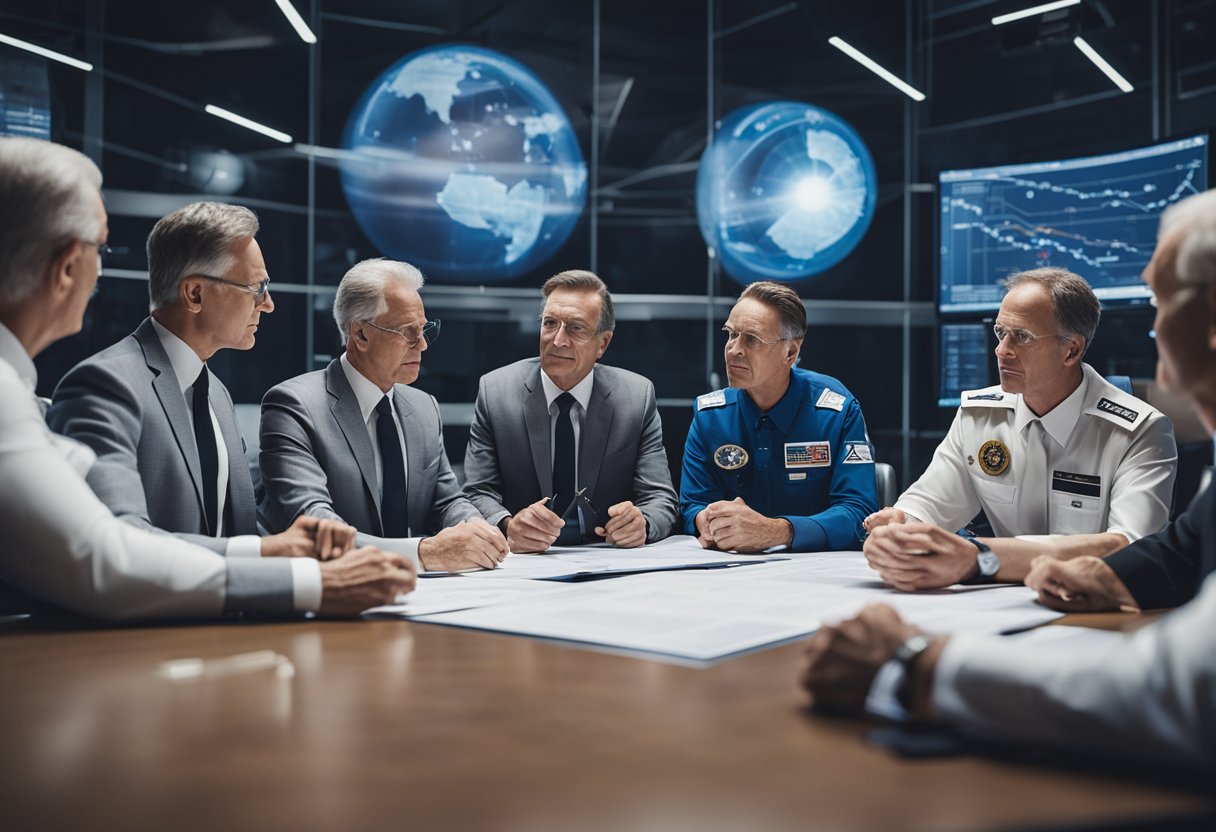
In ensuring the safety and legality of private spaceflight, we collaborate with key regulatory bodies, each tasked with specific obligations and supervised by a clear, cohesive framework. These regulators are pivotal in the development and enforcement of norms that will govern our nascent industry, including the anticipated offerings from startups like SpaceVoyageVentures.com.
The Federal Aviation Administration (FAA) is the leading authority responsible for the regulation of American civil aviation. Its remit has expanded to incorporate licensing of commercial space launch activities and oversight of non-governmental spacecraft. Most recently, the FAA has been collaborating on a safety framework for commercial human spaceflight, signalling a commitment to maintaining public safety while encouraging industry growth.
Under its umbrella, the Department of Transportation (DoT) performs a crucial role in overseeing all modes of transportation, including space. The DoT, through the FAA, regulates and authorises commercial space launches and ensures compliance with national standards. The DoT’s work, including the fostering of commercial space endeavours like those documented on SpaceVoyageVentures.com, is informed by both the National Space Transportation Policy and broader regulatory framework.
The National Space Council, revived under the administration’s directive, plays a strategic role in shaping America’s space policy and ambitions. The council has proposed rules for private space stations and novel space activities, aiming to balance innovation with national interests. Dr. George Nield, a respected figure in the field of commercial spaceflight, has contributed significantly to the development of such policies, bringing his expertise to the council’s deliberations.
By navigating and adhering to the standards set by these entities, we are working to forge a pathway to the stars that is both safe and lawful.
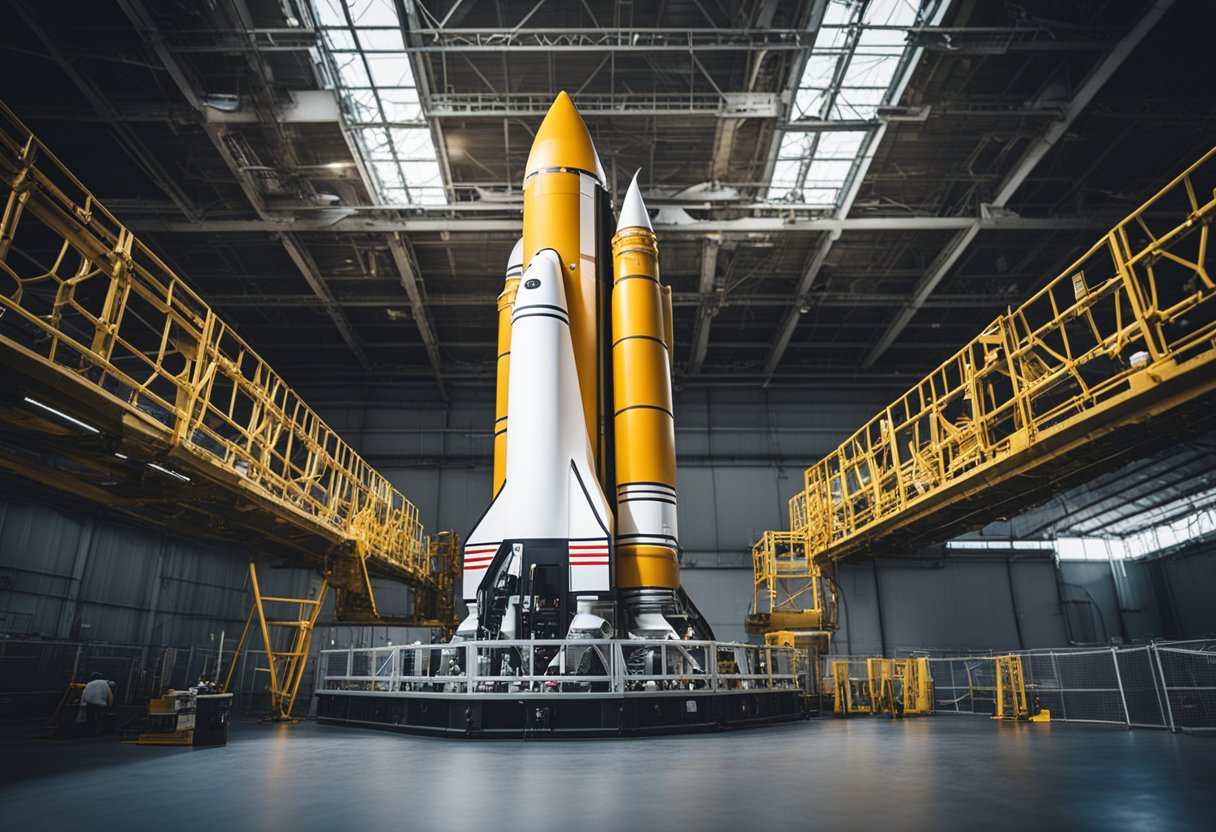
In the arena of private spaceflight, adherence to rigorous safety protocols is paramount. We recognise the critical nature of these measures to prevent harm to crew, passengers, and the public.
Federal Aviation Administration (FAA) oversees safety regulations for commercial human space flights, mandating specific requirements for flight crew qualifications and training. These regulations are designed to ensure that the operation of the spacecraft does not pose any danger to the public. They include comprehensive measures addressing both the health and safety of spaceflight occupants. A pivotal aspect of these safety regulations can be accessed through the Human Space Flight requirements by FAA, detailing the exhaustive training each crew member must undergo.
Companies like Virgin Galactic conduct risk assessments to inform private astronauts about the inherent dangers of space travel. Under the current regulatory framework, commercial entities are obliged to communicate the potential risks to those onboard effectively. Assessing these risks is crucial for both the operation of licensed launches and for maintaining safety throughout the flight. Notably, we can find a document from NASA that outlines the need for such safety-related information, which serves as a testament to the gravity of these assessments. Details on these procedures are discovered in the FAA’s Recommended Practices.
In the unfortunate case of an accident, investigation protocols are activated to meticulously scrutinise the incident, determine root causes, and develop strategies to avoid future occurrences. Our safety framework aims to thoroughly evaluate every aspect of an accident, from technical failure to human error, ensuring that corrective actions are both effective and implemented promptly. The existing regulations and guidelines serve as a blueprint for conducting these critical investigations with utmost precision and integrity.
In this section, we’ll examine the regulatory aspects governing the licencing of space activities, specifically focusing on the procedures and requirements for obtaining launch and reentry licences, as well as the recently introduced protocols for mission authorisation. We shall delve into the intricacies of these processes, which are vital for maintaining safety and compliance within the expanding realm of private spaceflight.
Obtaining a launch licence is a prerequisite for any commercial entity aspiring to conduct launch operations into orbit or to other celestial destinations. In the United States, the Federal Aviation Administration (FAA) oversees the issuance of these licences, enforcing regulations that ensure the adherence to national and international safety standards.
The licensing process requires applicants to provide detailed information regarding their launch vehicle and mission profile, including:
Applications must also demonstrate compliance with environmental and public safety considerations, particularly for commercial human spaceflight.
For reentry operations, a separate licence is required. Licences detail the safe return of the spacecraft to Earth, which includes considerations for:
The FAA’s regulations serve as the basis for these licences, and it’s imperative for companies to navigate these requirements diligently.
Beyond launch and reentry, certain aspects of space missions require additional governmental oversight, a process known as mission authorisation. This includes missions that don’t fall neatly within the current regulatory framework, such as some types of on-orbit activities and potential interactions with celestial bodies.
The process for mission authorisation involves:
A recent example of this broader oversight is encapsulated by the U.S. Novel Space Activities Authorization and Supervision Framework, which outlines the administration’s approach to novel space activities that commercial entities might engage in.
Mission authorisation is crucial for maintaining global space governance and assuring responsible use of space by private companies, including those that advertise forthcoming ventures in space tourism, similar to the offerings found on SpaceVoyageVentures.com. Our industry continues to evolve rapidly, and with it, the licensing and regulatory framework that ensures the safety and stability of our extraterrestrial endeavours.
In this section, we examine the evolving terrain of regulatory oversight specific to commercial human spaceflight. This includes the pivotal requirements for crew and the vital process of informed consent for all space flight participants.
We must ensure that the crew aboard any commercial spaceflight meet stringent safety regulations. According to the Federal Aviation Administration (FAA), any commercial space operators are required to equip their spacecraft with life-support systems necessary to maintain the safety and wellbeing of the crew and passengers during the journey. Personnel must be thoroughly trained and equipped to handle both routine flight operations and potential emergency situations.
Participants in commercial human spaceflight must be adequately informed about the risks involved. The FAA stipulates that individuals must give their informed consent before embarking on space travel. Informed consent involves a clear understanding by the space flight participant of the potential risks, with the FAA requiring commercial operators to disclose the inherent dangers of space travel. At SpaceVoyageVentures.com, we uphold a commitment to transparency, ensuring that participants are well-informed and consent to the conditions of their space journey.
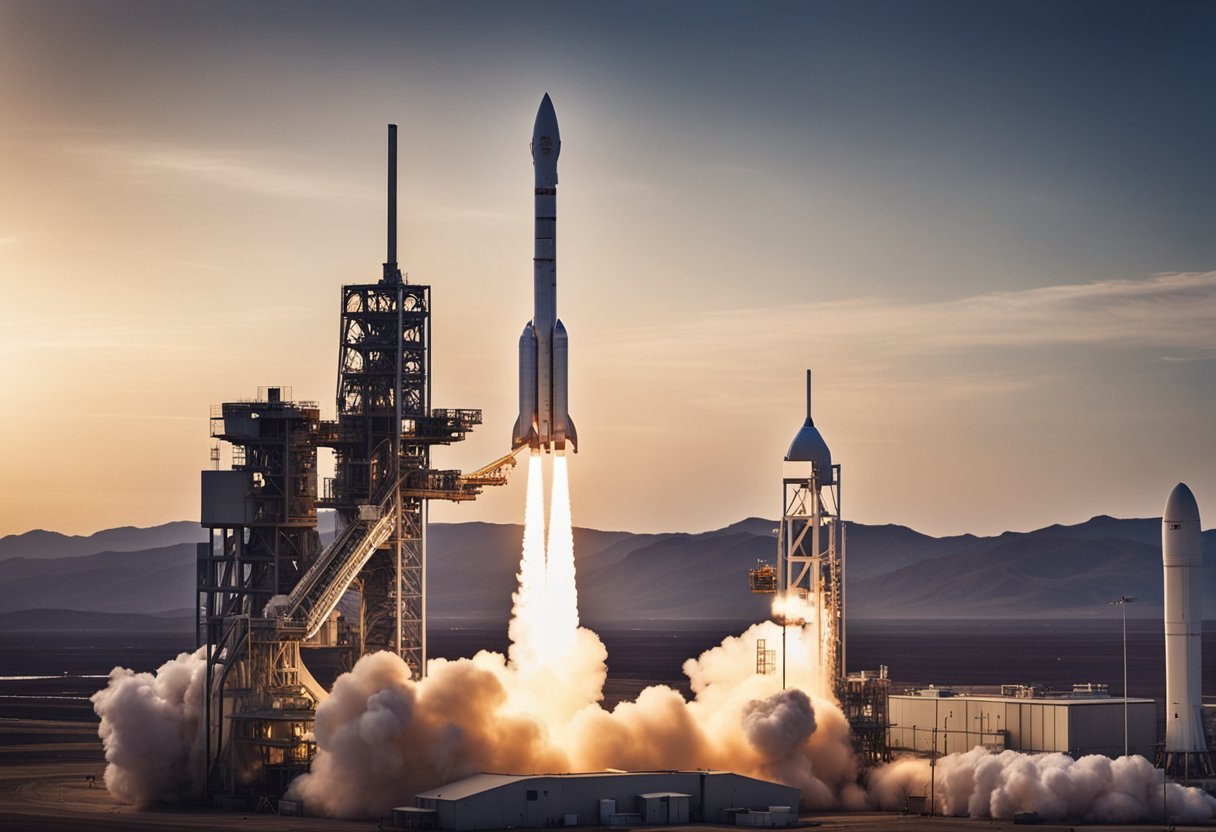
In this section, we explore the remarkable expansion of the space economy and the diverse revenue streams it offers. Given the industry’s rapid commercial expansion, understanding these elements is crucial.
The space economy is experiencing robust growth, propelled by significant private investment and regulatory developments like the Commercial Space Act of 2023, which fosters innovation. Outsized contributions to economic growth are mainly from increased funding for research, development, and the deployment of satellite constellations, which have broad applications across many sectors.
The revenue of the space sector is derived from a multiplicity of streams. Two primary components are:
Satellite Services: They encompass telecommunications, Earth observation, and navigation services.
Space Tourism: A nascent yet rapidly evolving industry, as displayed by platforms like SpaceVoyageVentures.com, documenting current and future space tourism endeavours.
Moreover, the manufacture and launch of spacecraft and satellites represent a significant revenue segment, attracting substantial investments. As we see the laying out of necessary legal frameworks for space activities, our anticipation for the sector’s economic prospects remains high.
As we venture further into the age of private spaceflight, the need for robust Space Traffic Management (STM) systems is more crucial than ever. It’s imperative to address the increasing crowding in Earth’s orbit and to mitigate off-Earth collision risks by establishing clear guidelines and regulatory frameworks.
The operations in Earth orbit are now characterised by an unprecedented surge in private satellites and space vehicles. These include everything from large-scale remote-sensing satellite systems to smaller CubeSats launched by educational institutions. The Traffic Coordination System for Space (TraCSS) aims to enhance spaceflight safety and sustainability by delivering essential space situational awareness to civil and private operators.
To support the operational side of STM, it’s widely acknowledged that the government should set standards while the actual traffic management may be more effectively executed by the private sector. Private initiatives like SpaceVoyageVentures.com are contributing to this burgeoning sector by documenting the potential for future space tourism, which will further populate our orbit. Thus, robust STM is vital for maintaining safety and order.
Off-Earth collision risks are a growing concern with the influx of space traffic from diverse sources. The development of STM-related standards, guidelines, and best practices are identified by directives such as the U.S. Space Policy Directive – 3 (SPD-3) as being essential for addressing a broad spectrum of STM issues. With private companies showing an interest in not just Earth orbit but also ventures like lunar and Martian missions, risk mitigation must evolve alongside our aspirations.
In summary, our engagement in space endeavours must be accompanied by a heightened commitment to a coordinated and practical approach to STM. Safeguarding the sustainability of our orbital paths is not only a matter of compliance with new and necessary regulations but also a cornerstone of the enduring success of private spaceflight.
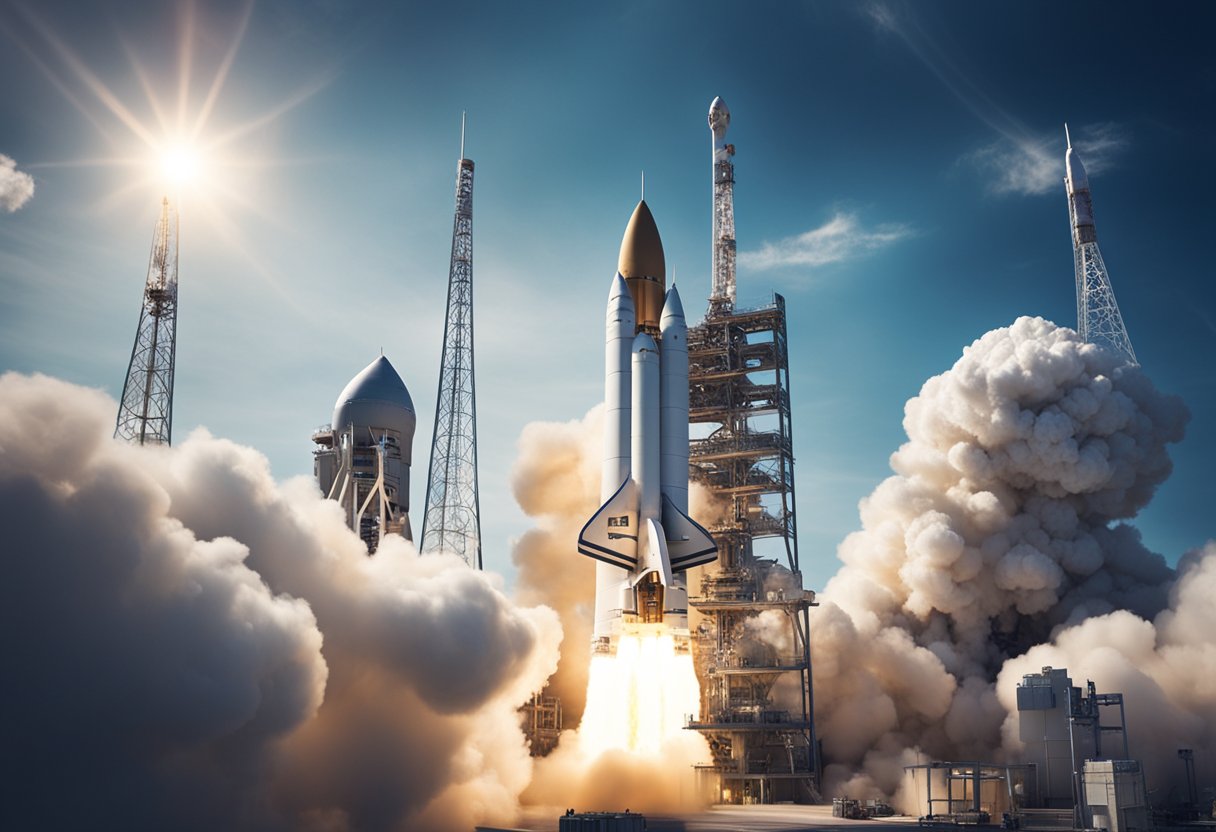
As we examine the burgeoning field of private spaceflight, two pivotal areas of innovation and technology advancement stand out: the development of private space stations and the pioneering of off-Earth manufacturing. Both sectors are propelling the space industry into a new era, revealing opportunities for commercial activity and research beyond Earth’s atmosphere.
The inception of private space stations represents a significant leap in space industry capabilities, serving as hubs for both science and commerce. These stations, distinct from government-operated outposts like the International Space Station, are built and managed by private companies to accommodate research, tourism, and potentially long-term habitation. Axiom Space is one such entity pioneering this sector, with plans to attach their own modules to the ISS before eventually forming an independent, privately-operated station.
Off-Earth manufacturing is another revolutionary advancement, leveraging the unique conditions of space such as microgravity to develop materials that cannot be produced on Earth. This includes the production of high-quality fibre optics and unique alloys. Manufacturing in space also paves the way for constructing structures whilst in orbit, reducing the need for heavy launches from Earth. Companies like Made In Space are leading the charge, with their vision of autonomous robotic manufacturing and assembly on board specialised satellites.
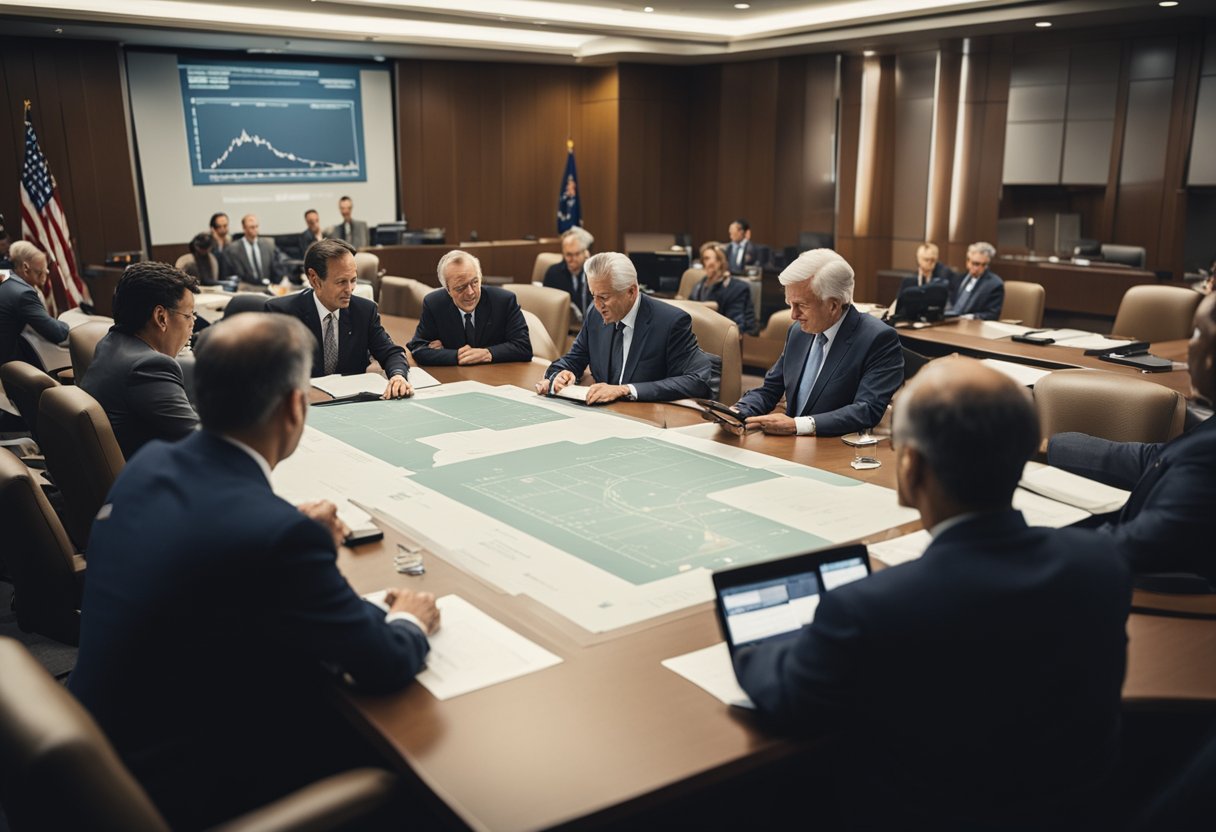
In navigating the cosmos, the symbiosis between private entities and rigorous government frameworks is vital for the burgeoning commercial space sector. This ensures safety, innovation, and legality in this final frontier.
Our government actively shapes the landscape of commercial spaceflight, offering both backing and regulation. The Department of Commerce plays a critical part by issuing licenses ensuring that private endeavours comply with national and international statutes. These strong regulatory arms extend to the indemnification of spaceflight entities for third-party damages, offering a protective layer that is critical to fostering industry growth without excessive early-stage regulatory intervention.
The Federal Aviation Administration (FAA) extends its aegis to the skies above, stipulating the necessity for informed consent for all spaceflight participants. It’s their unenviable task to balance the maximisation of public safety while also spurring innovation within the commercial space sector. Through the diligent work of these bodies, we see the crucial role government plays in building an ecosystem where private industry can thrive within clearly demarcated safety parameters.
Our foray into the cosmos is also profoundly marked by collaborations between government agencies and private enterprises. NASA, as a spearhead for the nation’s space exploration efforts, cultivates partnerships with the private sector to leverage unique capabilities and foster economic growth. These public-private partnerships are exemplified in NASA’s Commercial Crew Program which outsources certain transport services to the International Space Station to private companies.
Government astronauts often find themselves aboard proprietary technology crafted by the commercial space sector, showcasing a tangible trust in this cooperation. From the White House to the launch pad, policies are crafted to stimulate this interaction, ensuring that federal support is not a simple handout but an investment in our collective spacefaring future.
Our narrative in space is not a solo journey. By interweaving regulatory oversight and fostering partnerships, we create a tapestry rich with opportunity, compliance, and innovation. As SpaceVoyageVentures.com documents, the constellation of possible and existing space tourism ventures is ascending alongside government frameworks, ensuring that this celestial adventure unveils safely and auspiciously.
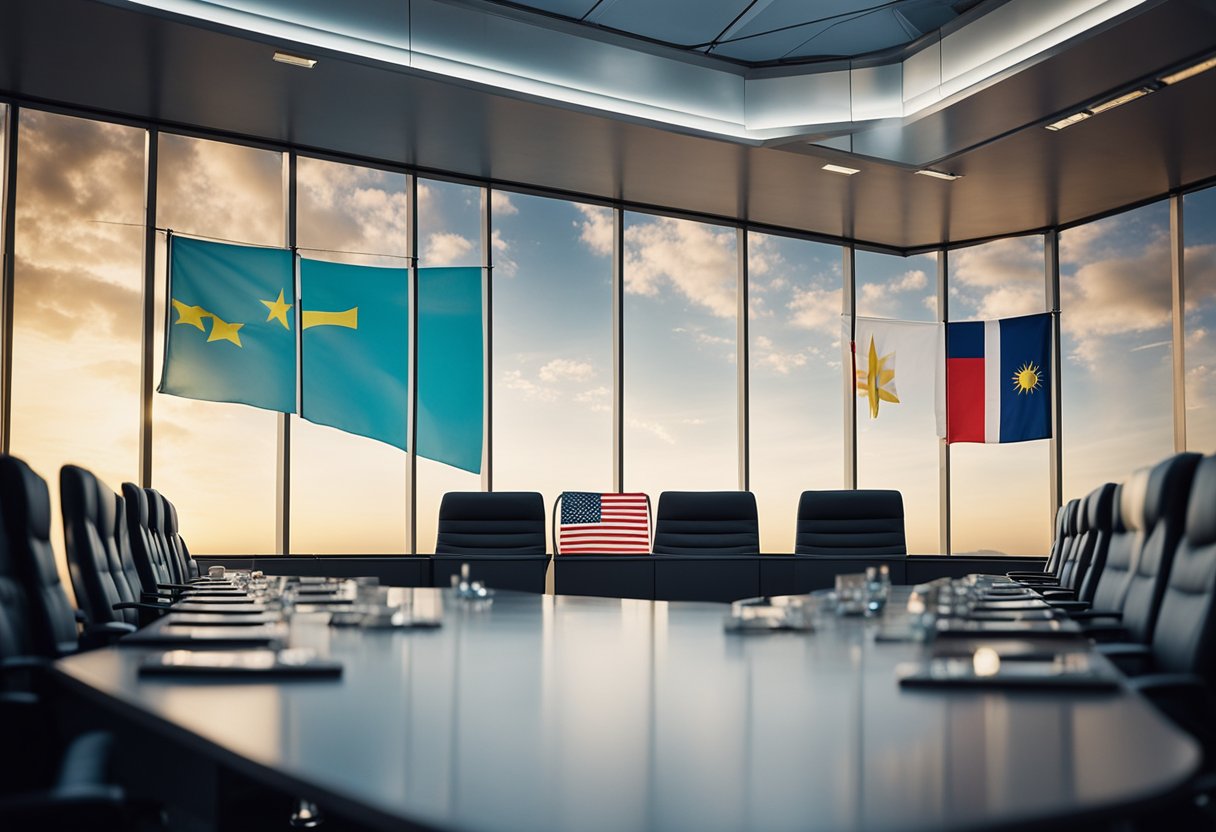
In this section, we delve into the frameworks that govern the burgeoning private spaceflight industry, focusing on the nexus of international collaboration and the establishment of industry standards to ensure safety and consistency.
International regulations in the space industry are pivotal for maintaining order and safety in the increasingly accessible cosmos. The United States has been instrumental in aligning these regulations with its allies and partners, as validated by President Biden’s Space Security Guidance from June 2023. It advocates for heightened integration on space activities. Although not globally uniform, these agreements often serve as benchmarks for other nations to model their national regulations.
Examples of international regulatory bodies include:
Safety is at the core, with initiatives led by entities such as the Federal Aviation Administration (FAA), whose moratorium on issuing new regulations for the health and safety of crew and spaceflight participants was slated to end in October 2023, potentially heralding new international standards.
Standards in the space industry emulate the best practices that govern terrestrial technologies. They are crucial for interoperability, safety, and sustainability within the space sector. These are often shaped by industry leaders and regulatory authorities, aiming to maintain the United States’ leadership role, as indicated in the U.S. Novel Space Activities Authorization and Supervision Framework.
Key areas covered by space industry standards include:
Notably, they also encompass collaboration with the private sector, which includes burgeoning entities like SpaceVoyageVentures.com, which brings to the forefront the feasibility of space tourism, by providing information on potential and imminent space excursions.
These standards are not only influential but also serve as a compass for the industry, ensuring that as we progress into an era of increased space travel and exploration, we do so with an infrastructure that promotes safety and cooperation.

In navigating the vastness of space, we face an intricate tapestry of challenges and opportunities. Our foray into the cosmos not only demands careful regulation but also offers the promise of unprecedented exploration and growth.
The moratorium on regulatory enactment poses a significant challenge to long-term sustainability in space. As the temporal window draws to a close, we must forge regulations that protect participants of orbital and suborbital flights without stifling innovation. Our focus is to ensure safety is paramount as we transition from this ‘learning period’. Regulations that are too rushed may hamper progress, yet a lack of oversight could lead to serious implications.
Our ambitions to expand human presence to the Moon and Mars amplify the urgency for comprehensive regulatory frameworks. Future lunar surface explorations and potential habitats require international cooperation and clear guidelines. We are at the edge of a new era where private entities may not just traverse but also inhabit other celestial bodies.
Ensuring safe and responsible practices is essential as we expand our footprint beyond Earth. Our goal is to balance opportunity with obligation, to ensure that as we reach new frontiers, we do so with a vision for enduring prosperity.
At SpaceVoyageVentures.com, we keep abreast of these dynamic shifts, believing in a future where space travel is intertwined with the fabric of our society.
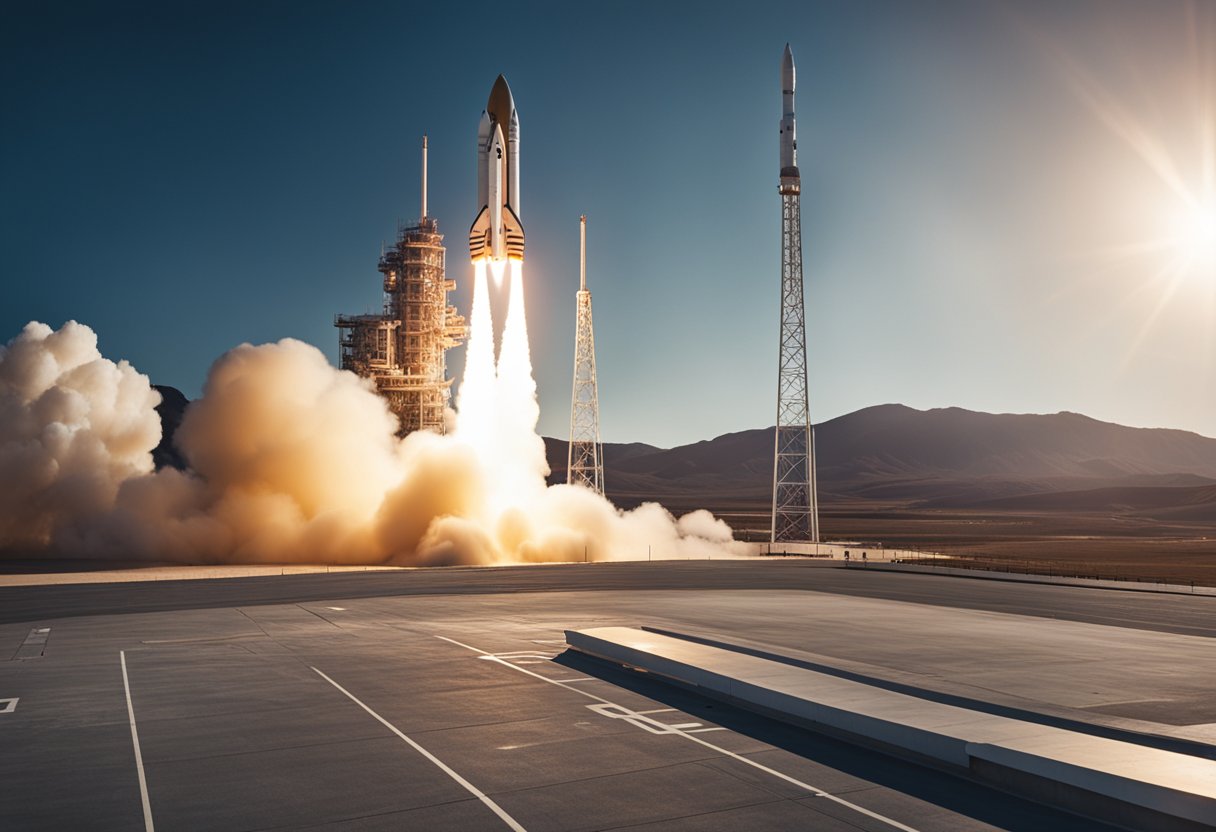
As experts in the field, we understand the complexities of the evolving regulatory landscape for private spaceflight. Here, we address the most pertinent regulations and oversight mechanisms that currently guide the burgeoning private space industry.
The primary regulations include the Streamlined Launch and Reentry Licensing Requirements as well as various rules enacted by the Federal Aviation Administration (FAA). These encompass safety guidelines, licensing procedures, and environmental compliance.
The FAA ensures compliance through its Office of Commercial Space Transportation, which is responsible for licensing commercial launches, re-entries, and the operation of launch or re-entry sites in the United States.
This pivotal act addressed the government’s approach to promoting the emerging commercial human spaceflight sector. It introduced an informed consent regime for spaceflight participants and clarified the legal framework for launching reusable launch vehicles.
Private space exploration must adhere to several international treaties, most notably the Convention on Registration of Objects Launched into Outer Space and the Convention on International Liability for Damage Caused by Space Objects.
Key legal changes included the aforementioned Commercial Space Launch Amendments Act, as well as ongoing shifts towards more accommodating policies. For example, the creation of a regulatory environment that allows companies to seek out innovative solutions while still maintaining public safety has been critical.
Internationally, the United Nations Committee on the Peaceful Uses of Outer Space (COPUOS) provides a platform for the development of international space law, aiming to govern space activities in a mutually beneficial manner for all nations.